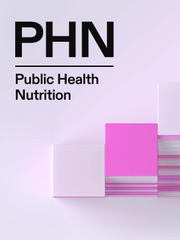Madam
We were pleased to read the investigation by Cawley et al.( Reference Cawley, Sweeney and Sobal 1 ) of the Guiding Stars nutrition rating system on the purchase of foods in the supermarket. Their results are encouraging in that this nutrition rating system led shoppers to buy a more nutritious mix of products. As the authors note, it is important to advance the goal of the Institute of Medicine to determine the influence of shelf-tag and related navigation tools on the purchase of nutritious foods. While their findings are largely consistent with previous examinations of the Guiding Stars system by Sutherland et al.( Reference Sutherland, Kaley and Fischer 2 ) and Rahkovsky et al.( Reference Rahkovsky, Lin and Lin 3 ), we question the analysis suggesting that such programmes may lead to lower profits and thereby jeopardize the sustainability of these front-of-pack systems.
Cawley et al.( Reference Cawley, Sweeney and Sobal 1 ) ‘noticed that the use of Guiding Stars led to an overall decline in supermarket sales’ during the period January 2005 to December 2007. It is worth noting that the Hannaford supermarket chain introduced Guiding Stars in September of 2006, about halfway through the time period of this sales data analysis. Importantly, Hannaford experienced dollar sales increases on a comparable store basis in each of the three years encompassed by the study. Although the actual sales results are proprietary, the same store growth rate in 2007 was significantly higher than the growth rate in 2006. The lack of congruency between the study results and actual supermarket sales data, together with the lack of information about changes in unit sales of specific items and their profile margins, could allow for a mistaken conclusion about the impact of the Guiding Stars programme on this supermarket’s profitability. Guiding Stars has now been in the Hannaford chain for eight years without any apparent adverse effect on overall food sales. Moreover, development and implementation of the Guiding Stars programme was undertaken as part of Hannaford’s commitment to its customers’ health and well-being; an increase in profit was never an underlying goal of the programme. Regardless, it is important to appreciate that many uncontrolled and confounding variables likely have a substantially greater influence on store profits than a voluntary nutrition rating system (or even one that might be mandated by government authorities).
Cawley et al.( Reference Cawley, Sweeney and Sobal 1 ) also suggest that the benefit of the Guiding Stars system was due to a decrease in the purchase of less nutritious foods rather than an increase in the sale of nutritious foods. This result in and of itself would improve the healthiness of the consumer shopping cart and in turn be expected to have positive consumer health benefits. However, we find this conclusion to be confusing as Guiding Stars only assigns ratings to nutritious food and provides no shelf-tag at all on foods not receiving stars (the authors incorrectly state that a tag of a running man with the words ‘No Guiding Stars’ in an arc over his head is found in supermarkets). Nevertheless, we fully agree with the authors that the evaluation of nutrition information systems should focus on the entire market basket and not just sales of specific food categories. As Guiding Stars has been shown to be successful in changing consumer behaviour, we encourage and look forward to additional independent investigations of this supermarket nutrition rating system.


